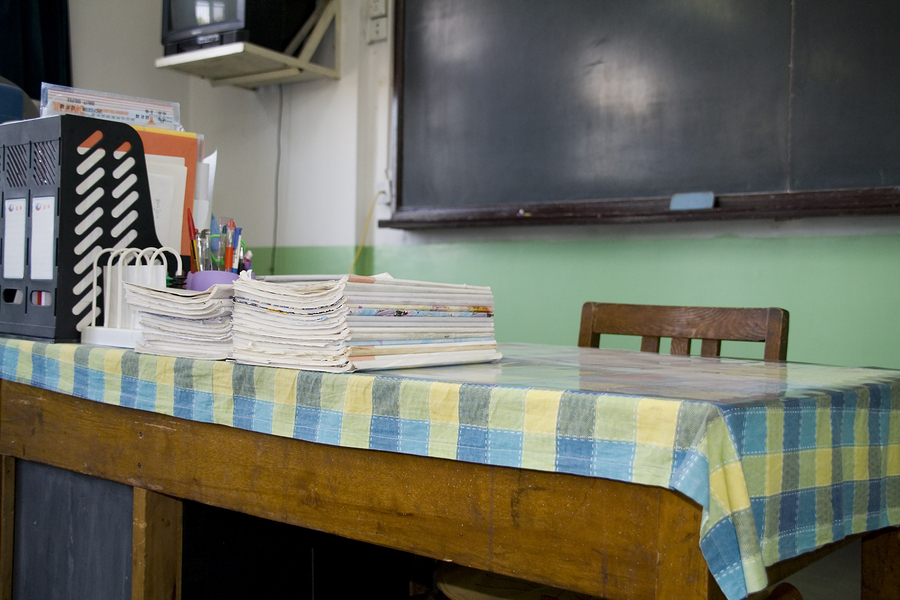Children learn everywhere and at all times, so why not involve parents and the community in education?
Photo: Bigstock
For years, there has been a debate over who is responsible for the education of children, and the Education Program of the Carnegie Corporation of New York (CCNY) has the answer: it belongs to everyone.
In its research, CCNY explores the benefits of bringing parents, teachers, community, politicians and the public together to demonstrate that education is everyone’s job.
On average, children spend 6,000 hours a year awake and only one-sixth of that time spent at school. That is why the urgency to join efforts to improve learning; attention should be paid not only to schools but to places where children spend the other 5,000 hours. It takes a joint effort to create a safe environment where learning outside the living room.
By having a continuous and multifaceted commitment on the part of the family from an early age to high school, children have a much higher graduation rate.
Graduating is especially valuable if students are in low-income schools, where the drop-out rates are 50%, and only 4% enroll in the university.
How did they do it?
To create a learning ecosystem, the Texas Industrial Areas Foundation (Texas IAF) experimented with a school, Zavala, to identify whether having good communication and parental involvement influenced the children’s education. The school went from 33rd in attendance in the district to the first and exceeded the average city score on state tests.
They succeeded in identifying the parent leaders and asking them their concerns to start the conversation. These concerns, expressed by low-income families, turned out to be: lack of proper medical care, delinquency/security in the neighborhood, and lack of activities and extracurricular work to prevent adolescents from ending up in gangs.
Then, to take advantage of the trust and the functional relationship established with the parents, workshops are held to talk about student performance. Different perspectives and data are discussed as well on how to improve the situation or what has worked and what has not.
The next step is to empower parents to form a partnership with teachers to improve and create opportunities for participation in the governance of the school. Followed by partnering, redesigning, implementing, evaluating, and to achieve the practices of the institution, and changes such as a new curriculum for math classes, in which parents can support from their homes.
Finally, Texas IAF managed to get parents to lead and defend in the community the topics that most interest them for their children. They managed to improve the school’s nursing and create 30 extracurricular activities programs. Likewise, the teachers developed ways in which parents could educate from home, beginning with identifying the interests and strengths of their children, reviewing homework and following the performance of the children.
Five practices to create greater efficiency in family participation
Five areas promise to create continuity in the family commitment throughout the education of their children and unite the teachers and the community: assistance, data exchange, academic and social development, digital media and transitions.
The first, assistance, goes beyond the desire that their children do not miss school. An exchange of data with families is needed to meet this expectation, such as sending automated text messages to parents whenever their child or adolescent does not go to school or had poor grades. This exchange promotes greater communication between both and, according to CCNY, and encourages to reduce faults and improve grades.
Sharing data is essential and not only to improve attendance but also so that parents can build their children’s learning path and that schools clearly and thoroughly report their performance to follow up on problems or support they ask for parents.
A crucial part of sharing data is having a group and individual meetings where not only attendance but data such as the graduation rate and its relevance must be explained to the parents. They are also essential to discuss ways in which learning at home, and elsewhere, is necessary for student success.
The following area, academic and social development, develops the idea of the family and the children performing different activities. An example is reading a classic story and discussing it so that the little ones improve their emerging literacy skills and the older ones use the text to learn new ideas and information to develop critical thinking. This scenario offers an opportunity for emotional and social learning, more if one talks about feelings and thoughts about the text and how it can be related to real situations.
Digital media is also a critical area because it allows children to learn anywhere, at any time, as well as to keep the family connected. Also, as mentioned before, through the internet, teachers can stay in touch with parents more easily and quickly to inform them of everything that happens with their children as performance and assistance.
The last area is the transition, which refers to the stages when the child starts kindergarten, enters the primary, secondary, high school or university. It is essential to pay attention since these times can amplify the socioeconomic differences, for which parents must be well informed to be able to support their children.
For the myth that the responsibility for education is of one or the other to collapse, it is necessary to change not only individual approaches and attitudes but roles in learning to support children successfully. It is also required to transform the narrative and mentality of parents and the community around their commitment through ties between all actors and to foster a better learning ecosystem that goes beyond the school.
This article from Observatory of the Institute for the Future of Education may be shared under the terms of the license CC BY-NC-SA 4.0 
)
)











)
Paulette Delgado
Paulette Delgado
Paulette Delgado